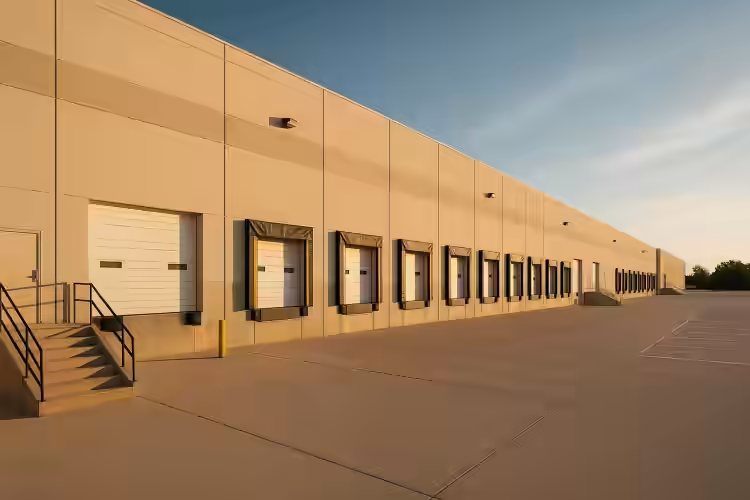State vs. City Warehousing: Where Should You Rent?
Why This Decision Matters More Than You Think
When you're shopping for warehouse space, the question of where can make or break your operation. Should you lock down 50,000 square feet inside the city limits ofChicago, or head 45 miles out to a cheaper park in
Joliet? Spoiler alert: it's not just about price per square foot. The decision between city vs. state warehousing — or more accurately, urban vs. suburban/rural — affects everything: costs, trucking time, labor availability, even your delivery
speed. This isn’t just a real estate decision. It’s a logistics strategy. Let’s break it down.
Defining the Terms: State vs. City Warehousing
Quick clarification: “state warehousing” doesn’t mean owned by the government. We’re talking about warehouses located outside dense metro areas, typically in suburban or rural zones of the state.City Warehousing
- Located within or near major urban centers
- Examples:
Brooklyn, New York,
Los Angeles, California,
Atlanta, Georgia - Close to end consumers, often higher rent, smaller footprints
State/Suburban Warehousing
- Found in industrial parks 30+ miles from city core
- Examples:
Ontario, California,
McDonough, Georgia - Larger facilities, lower cost per square foot, more land availability
Costs: Rents, Taxes, and Hidden Expenses
Let’s start with the money — because, let’s be honest, that’s usually the first filter.City Warehouses
- **Higher rent:** Premium locations command premium rates. In
Oakland, expect $1.40–$1.80 PSF/month vs. $0.80 out in
Tracy. - **Higher taxes and utilities:** City utility rates, business taxes, and insurance premiums all add up.
- **More regulations:** Think permits, inspections, and red tape.
State/Suburban Warehouses
- **Lower base rent:** Sometimes 30–50% less than urban sites.
- **More land for the price:** Need 100,000+ sq ft? State zones deliver space to grow.
- **Fewer “soft” costs:** Often less red tape, lower parking fees, and easier compliance.
Logistics and Infrastructure Access
Proximity to highways, ports, rail — these are the arteries of any warehouse-based business.City Advantages
- Close to last-mile zones (faster delivery to consumers or stores)
- Shorter trucking times = lower fuel costs
- Quick response for same-day/next-day delivery operations
State Advantages
- Better access to major interstates without urban congestion
- Often closer to major DC clusters or cross-dock networks
- Less risk of low-emission zones, bridge clearances, or truck bans
Fredericksburg, Virginia to
Richmond and
Raleigh, North Carolina — state warehousing might be more efficient than trying to thread trucks through downtown D.C. traffic.
Labor Market and Workforce Reliability
Let’s talk bodies — because robots aren’t doing everything yet.City Labor Markets
- **Larger available labor pool:** Cities often have higher unemployment and dense population = more resumes.
- **Higher turnover:** Urban workers may hop more between employers or industries.
- **Union presence:** Some cities have strong labor protections or unions, affecting cost and flexibility.
State/Suburban Labor Markets
- **Smaller labor pool:** You may struggle to find volume during peak seasons.
- **Longer commutes for workers:** If housing’s far from industrial parks, absenteeism can rise.
- **More stable teams:** Rural/suburban workers tend to stay longer and value consistent schedules.
Flexibility, Growth, and Zoning
Planning for today’s need is one thing. But can your warehouse flex as you grow?City Limits You Might Hit:
- Limited square footage
- Strict zoning codes (noise, truck traffic, operations hours)
- Hard to install equipment, build mezzanines, or expand footprint
State (Suburban/Rural) Benefits:
- Room to grow — literally. Adjacent parcels often available.
- More relaxed zoning for use types and vehicle traffic
- Easier buildouts (racking, automation, cold storage add-ons)
Real-World Scenarios
1. Last-Mile E-Commerce Hub
A fulfillment startup inDenver wanted 15,000 sqft near the downtown core. They paid more per square foot, but it shaved 45 minutes off delivery runs. With high velocity, the higher rent actually saved them money.
2. Food Distributor Scaling Nationally
A wholesaler based nearNashville moved from a tight in-city warehouse to a 3x larger space in
Lebanon. Lower rent + room for refrigerated storage helped them land a national grocery contract.
3. Mixed-Mode 3PL
One logistics provider leased both: a 30,000 sqft cross-dock inCharlotte, and a 100,000 sqft bulk storage facility in
Salisbury. They forward-deployed fast-moving items in the city and stored the rest out of town. Smart.
Final Thoughts: Strategy Over Postal Code
Here’s the truth: there’s no one-size-fits-all answer to the city vs. state warehouse debate. Your ideal location depends on your:- Delivery windows
- Labor requirements
- Zoning needs
- Growth trajectory
- Transportation model
by the cheap suburban rate), ask yourself:
Does this warehouse fit my strategy, or am I bending my strategy to fit the warehouse? Answer that — and the rest starts to fall into place.

